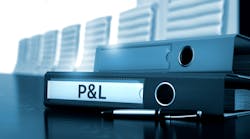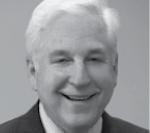Tracking dental practice overhead and what the results mean
As a dental CPA, many of my clients ask, “What’s reasonable overhead in a general dental practice?” Every practice is different, but my response is 60% of your collections. Their next question is, “How do I measure my practice overhead?” I will attempt to answer these questions and more.
Dental practice overhead
It’s important for you to control your practice overhead the minute you start practicing dentistry. Your goal is to have a profitable practice. Think about this. They do not offer intense courses on how to control practice overhead in dental school. As a result, you turn to others who do understand overhead. I encourage you to consider meeting with a dental CPA on a regular basis. Sit down with the person to review your profit and loss (P&L) statement. If something is unclear during your discussions, ask your CPA to explain in layman’s terms.
Formatting your P&L statement
In order to understand dental practice overhead, consider formatting your P&L statement by using various expense categories. I suggest these six expense categories: employee costs, variable dental costs, facility and equipment costs, other business expenses, discretionary costs, and owner’s compensation.
Employee costs—Employee costs should include your team’s salaries reflected by departments, such as chairside, front desk, and hygiene. In addition to employee salaries, include items such as payroll taxes, retirement plan contributions, group health and life insurance, and other employee fringe benefits.
In addition to these are the costs of outside services. These include temporary dental employment agency costs when you need to cover for an absent employee. Finally, and within the employee cost section of your P&L statement, do not include the cost of your associate. (These expenses should be reflected in the owner’s compensation section of your P&L statement). Your total employee costs should not exceed 28% of your practice’s collections, with a goal of 24%–26%.
Variable dental costs—These are costs that vary with the volume of oral health-care services you provide. As your volume increases, so do your variable costs. Normally this includes dental supplies, implant supplies, and lab fees. Right now, it can also include COVID-19 supplies. I like to show these costs separately on a P&L statement. Budget these at 6% of your collections for dental supplies and 8% for lab fees. The lab fees can vary even further if you’re using CAD/CAM technology.
If you use CAD/CAM, the lab fees will reduce to 2%–3% of your collections. Keep in mind that the costs associated with CAD/CAM should be included within your lab fees. Mention this to the team member who maintains your records. The idea here is that the CAD/CAM replaces what was once your dental lab vendor. So, the CAD/CAM costs, purchased from your dental supplier, should be included in your lab fees and not as part of your dental supplies. The largest of these items will be the porcelain blocks.
As you try to maintain your dental overhead within this section of the P&L, be careful how you code your disbursements. For example, I see dentists who code their check disbursements to dental supplies. After all, the check was written to a dental supplier. However, be careful because dental suppliers offer additional services, such as dental equipment repairs and purchases. Obviously, if these disbursements are coded as supplies in your accounting software, they will distort the relationship of your dental supplies to fee income, and this will make it hard to achieve this 6% relationship.
Facility and equipment costs—Facility and equipment costs in your P&L statement include such items as depreciation of your equipment and the interest costs associated with your practice acquisition. In addition, you should include the rental costs of your facility, equipment leasing, and other tax costs such as personal property taxes, real estate taxes, and utility costs.
You may be asking, if I recently purchased my practice, where do the costs of goodwill go? The costs associated with the amortization of your goodwill acquisition are included here as well. The budget for your facility and equipment costs is approximately 10% of your collections. The rent expense of the facility is almost half (5%–6%) of this budgeted amount.
Other business expenses—These include advertising, bank charges, continuing education, dues and subscriptions, insurance costs, office supplies and postage, professional fees, telephone, uniforms, and laundry. Budget these at 11% of your collections. The 11% factor is further broken down to include advertising and marketing at 1%–2% of your collections, bank charges at 1%, office supplies at 1%, and professional fees at 1.5%–2%. If you purchased equipment, computers, or office furniture, these costs should be reflected as equipment costs—not office expenses—and depreciated over their useful lives.
Discretionary costs—These include automobile costs, contributions, gifts, meals, entertainment, and travel and should not exceed 2% of your collections.
Owner’s compensation—Finally, the owner’s compensation section of your P&L statement includes your wages, your family’s wages, your associate’s compensation, and your portion of your retirement plan contribution. The budget for owner’s compensation should be 35%–40% of your collections.
Other factors that impact your overhead
Dental overhead is measured mostly through numerical indices. But there are other considerations in your practice that will help you control your overhead. These are:
- Setting your fees—Consider rebalancing your fees.
- Ratios—What are your hygiene department KPIs?
- Daily budgets—Do you have a daily budgeted production?
- Marketing—Have you considered internal marketing?
Setting your fees—Annually, for example on January 1, you should rebalance your fees. Check with your CPA because he or she has access to local fees for your area. Many dental CPAs have access to national databases where they can obtain the fee information for your zip code. Most of the national consultants suggest setting your fees at the 70th percentile or higher based on your market area. Be sure to ask for help, especially if you do not have access to this information.
Ratios—There are many KPIs in your hygiene department. The two numerical ones I lean on when measuring a client’s hygiene department’s financial effectiveness are hourly rates to daily production, and daily hygiene production to doctor production.
Daily production—As an example, say you are compensating your hygienist at $45 an hour. I would set the hygienist daily production at a three-to-one relationship. What this means is that the hygienist should be producing at a rate of $135 an hour ($45 x 3). When you equate that hourly rate to an eight-hour day, the hygienist should be producing $1,080 a day or more.
Once you establish the daily hygiene production, you’re ready to set your daily production as the doctor. This should equate to three times the daily hygiene production, or $3,240 a day.
As the president of the Academy of Dental CPAs (ADCPA), I often lead discussions about our clients’ profitability and what factors are used to arrive at that profitability. We ask, where should the doctor’s hygiene exam fee be credited? At the ADCPA, we have concluded that if the doctor performs the procedure, he or she should receive the credit for it and not the hygienist.
Marketing—I see many practices bypass the concept of internal marketing and race to external marketing, which is like taking a shotgun approach to your marketing endeavors, whether it’s radio, TV, or newspaper ads. I sense this because many practices are not counseled on the concept of internal marketing. I define internal marketing as a practice marketing its services through its existing patients, also referred to as word-of-mouth marketing. What better way to market your practice than through existing happy patients? These patients become ambassadors for your practice. Reach out to these folks and allow them to help you build your practice. After all, they’re already well-versed on the culture of your practice, so if you allow them to, they will sell your services for you!
Do you have a dental CPA?
True dental CPAs are well-educated in all financial aspects of your practice. They have the credentials to offer their professional services to help you grow your practice, and they look for areas of opportunity to improve your overhead. Dental CPAs have knowledge of this industry and have the skills that make them unique in the services they offer. If you would like to learn how a dental CPA can help grow your practice, visit the ADCPA website or email me. Good luck controlling your practice overhead.
ALLEN M. SCHIFF, CPA, CFE, is the president of the Academy of Dental CPAs. This group of very knowledgeable CPA firms specializes in practice management services for the dental industry. Schiff serves on the ADCPA executive committee and is currently assistng the ADA on the PPP loans program, etc.. Reach him at (410) 321-7707 or [email protected].







